Pinewood is one of the most misunderstood materials in woodwork. It’s perhaps because of its more popular alternatives that pine lumber is often underestimated. In my decades of experience with pine, I have pine to be far stronger than what most people assume. So, Is pine wood strong?
Pine wood is strong enough to be used in all wooden furniture items and other projects you wish to make. On average, pine is good enough in any context where scratches aren’t a possibility or a dealbreaker.
In this article, you will discover the truth about pine from my 20 years of working with it. I have worked with Cedar, Poplar, Oak, and Cherry, among other types of wood, and provide an objective take on the strength of pine.
Pine Wood Strength
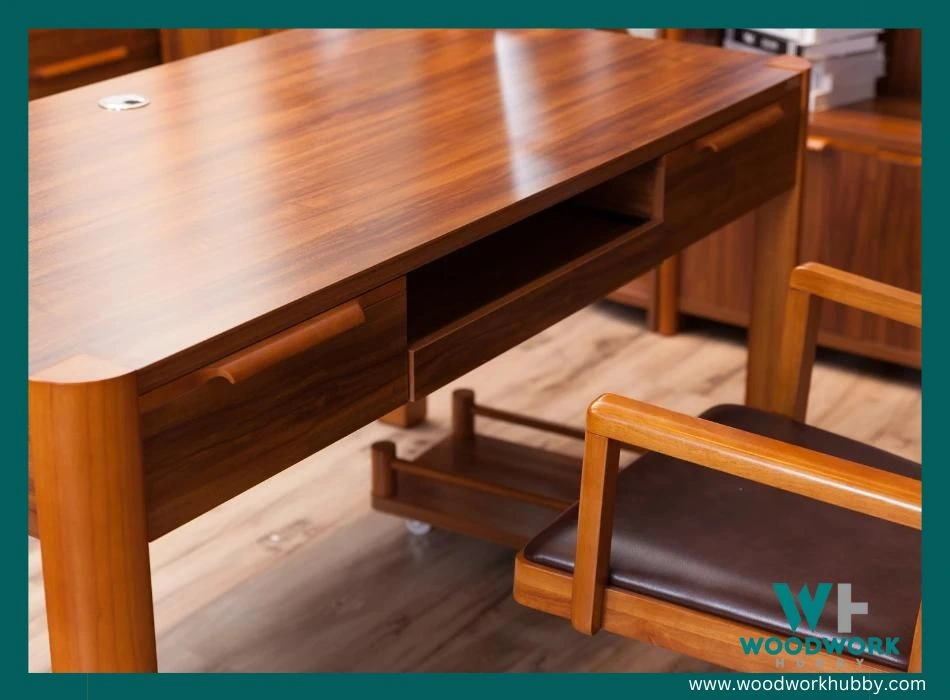
Pinewood has medium-high strength, which means it can be used to build furniture, including bed frames and chairs. Even though pine wood does not break easily, it should not be used for decorative items because it can get scratched easily due to its soft grain structure.
You must be aware of this specific weakness because wooden projects require more than just physical strengths. Aesthetic pleasance is also expected at times. The last thing you want is to build a pine wood project with appearances in mind and then be disappointed that even though the wood is strong enough, it is not scratch-resistant.
According to my research, here is what the wood harness and strength look like for a few common woods:
| Wood Variety | Janka Hardness (higher to lower) | Tensile Strength |
|---|---|---|
| White Oak | 1,360 lbf | 770 psi |
| Red Oak | 1,290 lbf | 798 psi |
| Paper Birch | 910 lbf | 380 psi |
| Longleaf pine | 870 lbf | 290 psi |
| Shortleaf Pine | 690 lbf | 280 psi |
| Poplar | 540 lbf | 460 psi |
| White Cedar | 350 lbf | 218 psi |
Janka hardness is measured by pushing a small steel ball across the surface of the lumber and measuring the force required to push the ball to half its depth. This measures the hardness and the ability of the wood to resist denting.
This shows that to make an integrity-weakening dent in the weakest pine, you would need more force than you would to dent poplar or white cedar.
Below is a video showcasing a long-form strength test on pine softwood.
Video showing strength test on pine
It shows that you can use pinewood for softwood applications but must keep it away from contexts where its screws are in direct contact with it as they seem to have an easier time biting into the lumber.
Here are the different types of pinewood:
- Spruce Pine Tree wood
- Longleaf Pinewood
- Shortleaf Pinewood
- Table Mountain Pinewood
- Sand Pine Tree wood
- Slash Pinewood
- Loblolly Pinewood
Plus many others dependant on where you live.
Is Pine Wood Strong for Furniture?
Pine wood is strong enough for furniture as its lumber is among the toughest in softwoods, and the average softwood is strong enough for furniture-making. Pine wood can be used to make furniture that has a higher load burden than daily-use furniture.
Pine Wood Furniture Durability
In my experience, pine is a ‘softwood’ in name only as it is pretty durable and has many hardwood qualities. You can use it for anything that softwoods are used for and some of the functions that are generally reserved for entry-level hardwoods. It is only when you need to use pine for hardwood functions that you have to investigate its compatibility.
Pinewood furniture items include:
- Chairs
- Tables
- Desks
- Bed frames
Pinewood projects have lasted me 13 years on average. I had made a utensil organizer from pine leftovers, and it was in pretty good condition even at 18 years when I took it out of the storage and threw it away. But that’s most likely because we had used it for a month and then dumped it in the storage.
Inexpensive furniture wood aside from pinewood include:
- Ashwood
- Poplar
- Fir
- Gum
What Is the Strongest Wood for Furniture?
Oak is the strongest wood for furniture, while pine wood is the strongest among durable lumber options for furniture. Where oak wood is used for high-end furniture, pine wood is used for medium-cost furniture meant to last at least a decade.
The main advantage of Oak is that it is as indestructible as wood gets. It is often said that the Oak Tree takes 300 years to grow, the same span of time living, and the same span of time to die. It is as long-lasting as wood gets.
At the same time, Oak is also as expensive as wood gets, which can seriously impact many project decisions. For instance, any furniture item that is not meant to last longer than 10 years being made with Oak is a waste of money unless the oak wood has a symbolic significance (i.e., signaling wealth or status).
Pinewood performs well on the budget-practicality balance scale. I have rarely found pine wood too expensive for an item I have built with it. But the problem with pinewood is that it can get scratched quite often. Overall, I still prefer pine for daily use furniture and other projects but keep Oak in a league of its own.
Is Pine Wood Strong for a Bed Frame?
Pine wood is strong enough for a bed frame. It would take 70 times the gravity to cross 690 lbf (which is the common pinewood lumber’s Janka hardness) across all planks in a pinewood bed frame and break it. Needless to say, this is unlikely to happen.
Pine wood is perfect for a bed frame as it’s strong, inexpensive and most of it is unseen.
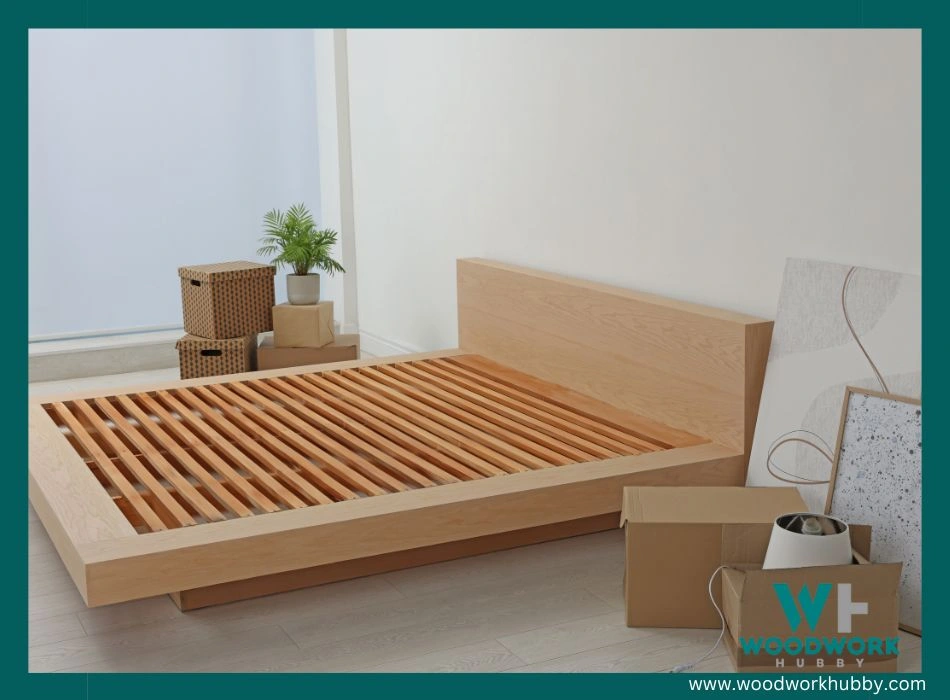
Whether through force, speed, or extra weight, it is possible to exceed the effect of 70 times gravity, though. I simply divided gravity’s 9.81 value with the Janka hardness of the lumber to get a rough idea of the difference between the force on the bed frame and the force required to break a bed frame.
But the above calculation, alongside the fact that my cedar bed has remained in good shape even though cedar is usually weaker than pine, tells me that your pinewood bed frame will be fine. If you consider yourself within the weight range of two times the average American weight, pinewood is perfect for your bed frame.
Is Solid Pine Wood Strong
Solid pine wood is a superior choice, celebrated for its remarkable tensile strength. This inherent property allows it to resist forces pulling from opposite directions, making it highly durable and resilient.
I often using solid pine wood for this very reason and it is easy to work with woodworking tools.
Pine Is a Softwood, But Why Pinewood Is Strong
- Compressive strength
- Density
- Bending Strength
- Hardness
- Stiffness
These are the most common reasons why I would use Pinewood even though it is a softwood. Don’t let it surprise you!
Is Pine Wood Strong for Stairs?
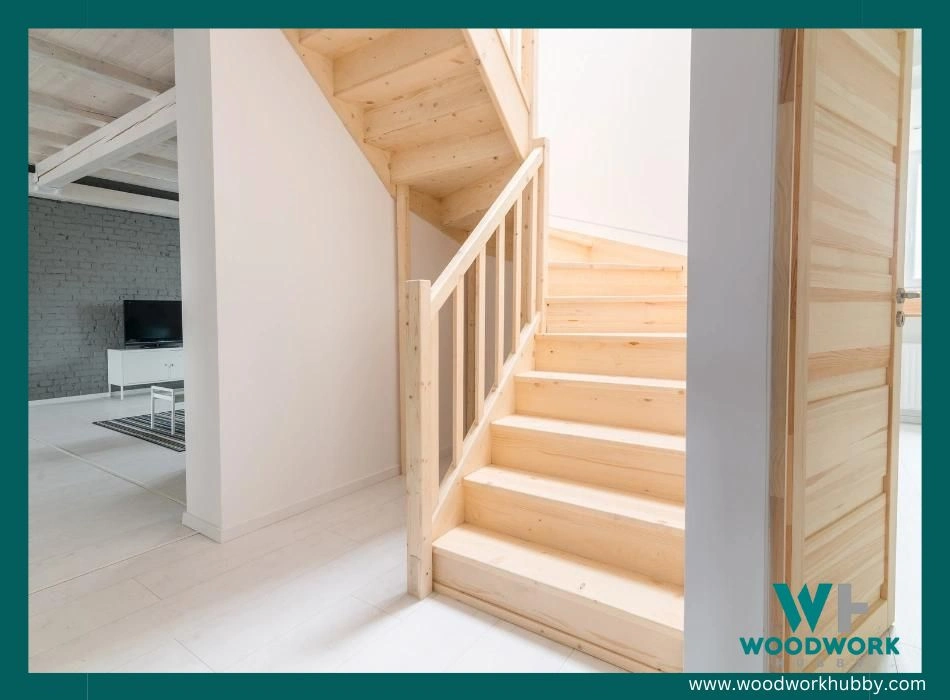
Pine wood is not strong enough to build entire stairs but is strong enough for making stair treads (the top cover of each step). If you use pine wood for stair treads, you should be prepared to replace them within a few years due to pine having a soft grain.
In my honest opinion, using pine wood for stair treads is a mistake. Even though the lumber is quite hard and durable, it just doesn’t do well with velocity and impact. In a bed frame, it does not experience as much movement. And the kind of movement it feels is not constant even if it is used by a live-in couple. Moreover, it is cushioned by a mattress.
Pine wood probably has enough strength for stair stringers, but is too soft for stair treads. I would opt for Oak.
The repeated force of footsteps that stairs experience, though, requires a different degree of hardness. Using hardwood treads is recommended for stairs. Earlier, I mentioned that it is only when you need to use pine for hardwood functions that you really need to think about your choices. And I’ve thought about it.
Hickory and Oak are the best wood types to use for stair treads in a busy house, while pine wood is perfect for a single bachelor’s house. If you can only afford pine wood treads and you know somebody will be running across the stairs, then you need to get a can of wood filler like Carpenter’s Color Change Wood Filler.
Carpenter’s Color Change Wood Filler
Any scratch on the stair treads can be fixed with an appropriate wood-filler repair operation. The other option is to replace the tread, which is obviously more expensive.
Is Pinewood Strong for Shelves?
Pine wood is strong enough for shelves and is one of the most common materials used for shelves. For heavier items like books, I recommend adding a front stiffener rail to prevent sagging long term. You could use stronger woods if you prefer but I have found Pinewood to be quite ok for most shelves. Adding extra brackets for support is recommended.
It is not as much about the shelves’ strength as it is about the bite of the support structure and the pine’s inability to resist it. The screws (even with plugs) bite into the pine wood and allows the shelf to sag.
The same slab of pine wood can be placed on flat ground, and heavy tools can be put on it. While pine slab shelves might incur dents and scratches if used to carry garage items and woodworking equipment, they have little to no chance of breaking as a result of doing so.
There’s a myth regarding bookshelves that they don’t need to be strong. While individual books might not be heavy, their collective, persistent load does make screws bite harder into wood slabs.
Best materials (and more expensive) for shelf-making include:
- Mahogany
- Koa
- African Padauk
- Birch
- Oak
- Pine (Stronger variety)
Is Pine Wood Good for a Dining Table?
Pine Wood is good for a dining table and is one of the best-used lumber for common-use dining tables. Given liquids can spill on tables, and hot food is placed over them, material that resists shrinkage like pine wood can have surprising longevity.
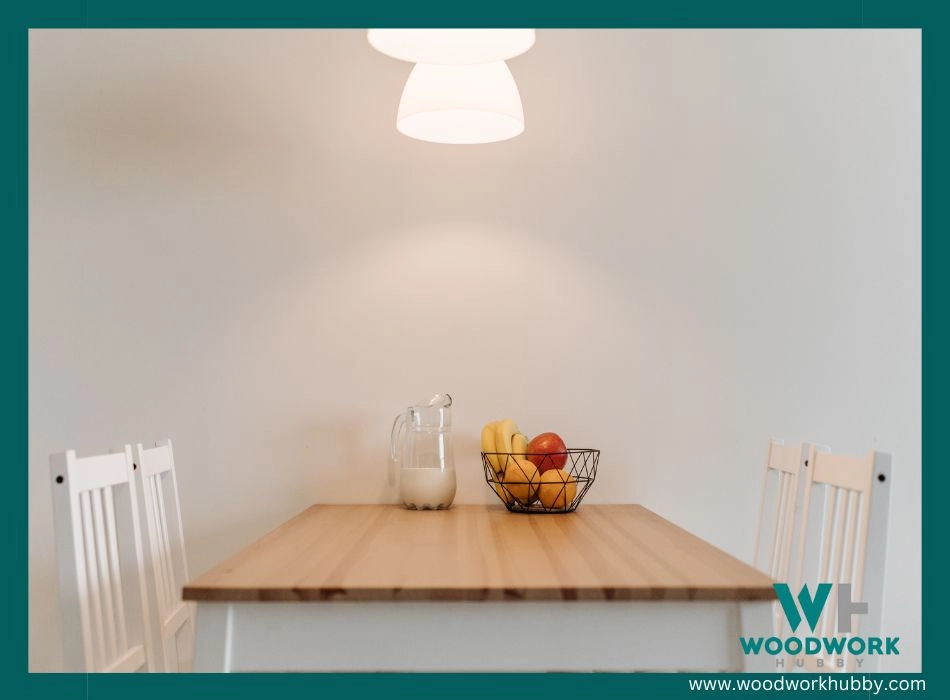
Unfortunately, dining tables built to show off opulence take center stage in people’s attention, and the fact that pine wood is easily good enough, gets overlooked.
This video shows a pinewood dining table where the tabletop is made of pine, and the rest is a metal frame. This type of table will obviously last longer than a full pinewood table.
Video on using pine wood for a table
But if you want a minimal pinewood dining table that doesn’t use metal legs, you should know that that too is possible.
The video below shows how simple it is to build with standard sizing. The table made in the video looks quite sturdy as well.
Video of pine dining table
If you don’t use pinewood for your dining table, consider the following:
- Elm
- Walnut
- Cherry
- Hickory
Is Pine Wood Stronger Than Plywood?
In my experience, I how found Pine wood to be stronger given a certain section size. In saying that, plywood is no pushover, especially 3/4″ (19mm).
In the great debate over the strength between pine wood and plywood for woodworking projects, both materials have their merits. Pine wood, with its natural beauty and affordability, offers impressive tensile strength, making it ideal for furniture, flooring, and construction components.
On the other hand, plywood’s cross-grain construction grants it enhanced stability, resistance to warping, and versatility for various indoor and outdoor applications. The choice between the two ultimately hinges on project-specific needs, with pine wood excelling in load-bearing projects and plywood proving superior for stable, large surfaces.
Consider your project’s demands, aesthetics, and budget to make an informed decision and craft enduring pieces that stand the test of time.
Is Pine Stronger than Poplar?
Pine is stronger than poplar. The common pine wood (shortleaf pine lumber) is slightly harder than poplar, while the long-lead pine lumber is over 50% harder than poplar. This can be derived from their respective Janka rating.
One might wonder why poplar is seen more often in common-use projects and applications. But that’s almost exclusively due to cost factors and availability. The nature of our product adoption is such that we continue adopting what we see others using. Since poplar is already used in specific projects, other people keep seeing it and using it, which further fuels this adoption.
Pinewood, in my experience, can see the same boom since its recent bump in popularity. I have seen it being adopted in furniture projects more and more in the last twenty years.
Is Pine Water-Resistant?
Pine is water-resistant to an extent, but you cannot count on its resistance to moisture to also be effective at combating constant spills and rain. The lumber needs to be coated with a fairly waterproof finish.
The drawback of using a strong waterproof varnish is that it can offset the grain. The grain of pinewood is often seen as a major positive feature. So, when looking for a finish, you need to choose one that is waterproof but doesn’t interfere with how the wood feels.
Generally, water-resistant finishes include:
- Polyurethane
- Varnish
- Lacquer
Is Pine Better Than Oak
Pine is not better than Oak in strength, durability, or longevity but is better-priced than oak lumber. If your project’s selling price is lower than the oak raw material required, then pinewood is better for your project compared to Oak.
Other strong furniture wood includes:
- Ash
- Mahogany
- Maple
- Birch
- Hickory
Is Pine Stronger than Cedar?
Pine is stronger than cedar, but cedar is seen as more visually pleasing. Technically, pine wood can be used in any project in which cedar is used. You have to account for factors like cost and availability, though.
Above all, you’ll have to contend with the visual difference between these types of woods. Pine is considerably lighter, while cedar has a more visible hue.
Pros and Cons of Pinewood. Is it Good?
Pinewood has plenty of benefits yet is not the only material used in wood products. That’s because it, just like any other wood, is not universally superior. There are limitations that make it sub-optimal in some cases.
Let’s look at the advantages and disadvantages of pinewood in this section.
Pros of Pinewood
Let’s start by looking at everything good about pinewood. This is crucial to paint an objective picture because there is plenty of falsehoods regarding this lumber. The myth-free advantages of using pinewood are as follows.
1. Pinewood Doesn’t Warp
No natural wood warps like vinyl or laminate material. But even organic wood can shrink or expand based on temperature and humidity. Pinewood is definitively dead wood and remains dimensionally stable to a point where you won’t notice any warping in normal circumstances. It’s because pinewood doesn’t shrink as much uner normal circumstances.
Here is how Pinewood compares to other options in terms of shrinkage:
| Wood Type | Tangential Shrinkage |
|---|---|
| White Oak | 10.5% |
| Red Oak | 12% |
| Paper Birch | 8.6% |
| longleaf pine | 7.5% |
| Shortleaf Pine | 7.7% |
| Poplar | 7.1% |
| White Cedar | 4.9% |
This video will help you understand more about Tangential Shrinkage and why it matters.
Video about wood shrinkage and movement
2. It Is Easier to Work With
As satisfying as an oak project is to finish, I don’t miss the time I spend making the product. Hardwood can be hard to work with, no pun intended. Pinewood is lightweight and can be carried to different locations easily.
It makes construction simple and transportation practical. All of these benefits are nested in the fact that it doesn’t resist work tools and is light. Not only that, but it’s easier on your tools!
Here is how pinewood compares to other types of wood in density:
| Wood Type | Density Rating |
|---|---|
| White Oak | 37 – 56 lb/ft3 |
| Red Oak | 45 lb/ft3 |
| Paper Birch | 38.6 lb/ft3 |
| Longleaf pine | 29 lb/ft3 |
| Shortleaf Pine | 35.6 lb/ft3 |
| Poplar | 22 – 31 lb/ft3 |
| White Cedar | 23 lb/ft3 |
3. Pinewood Is Durable
The lightness of a pinewood plank should not be taken lightly. This lumber is quite hard and can be used for everything softwood can be used in. As mentioned earlier, it can prove its mettle even in hardwood products, with pinewood stair treads being practical in specific contexts.
4. It Is Not Expensive
Another advantage, which is most often the deciding advantage, of using pinewood for furniture and other projects is that it is not as expensive as other wood of similar size. Usually, projects that don’t fetch a high enough price need to be made with inexpensive material, and getting lumber that is as strong as pine is difficult if you’re on a tight budget.
Here is a list of inexpensive pinewood projects you can DIY at home:
- Footrest to keep under your desk
- Food-safe epoxy-coated cutting board
- Hand tool organizer
- Pen holder
- Kitchen knife block
5. Has Decent Moisture Resistance
Pine wood is best used in places where moisture absorption can be an issue. This includes certain exterior environments and often humid regions. While pine can scratch from impact, it doesn’t become a rot-fest in the presence of humidity. That said, you should still finish pinewood surfaces.
6. It Has a Pleasant Grain
The final advantage of pinewood might not be as much of an objective pro as it is a preference. In my option, pinewood has an attractive grain, and it feels good to touch. This feature shines when the wood item needs to be handled or is within reach.
The Cons of Pinewood
Pinewood has many advantages, but as stated earlier, it would be used universally across all projects if it had no drawbacks. There are limitations to every type of lumber, and pinewood is no exception. Here are the disadvantages of using pine.
1. It Can Get Dented with Everyday Use
One of the most glaring drawbacks of pinewood is that even with regular use (and no extraordinary surface impact), its surface can get scratched. While denting pine to the point of damaging its core is quite difficult with normal use, putting surface-level scratches on its lumber is quite easy.
2. Requires More Paint
Pine absorbs paint which means that you need more paint to coat the lumber. If pine is a choice made solely on its impact on your budget, you should definitely not use it for a project that requires painting.
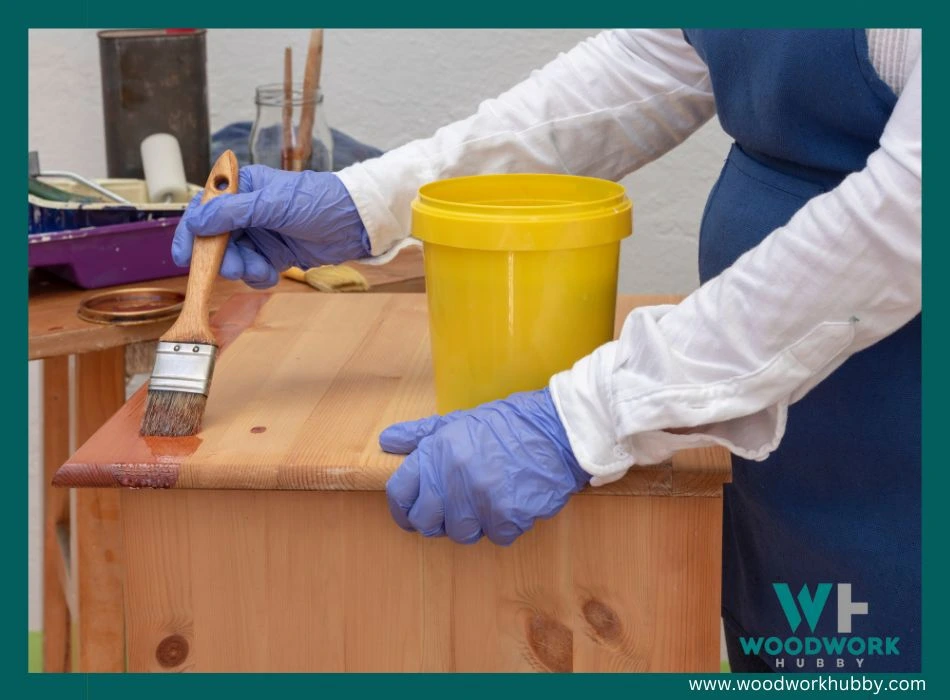
3. Requires Sanding
Another issue I have noticed is that pinewood cannot be shipped off without light sanding. I sand more of the pinewood projects by hand. The grain, while attractive, can be too prominent at times. In very rare cases, the time pine saves in being easier to work with is lost in sanding it.
I have only heard about this because, in my experience, even with sanding, pinewood projects take less time than their equivalent hardwoods.
See the differences between Hemlock Wood vs Pine. I wrote a full guide on them both.
4. Not as Strong as Hardwoods
Pinewood sits at an interesting cross-road where it is seen as hardwood in a few contexts because it beats almost every softwood in hardness. However, it is very rarely comparable to hardwoods in any area except price.
Final Thoughts – Is Pine Wood Strong?
If you’re an average woodworker, then the age-old question, is Pine wood strong, may hold high hopes for you. Pinewood in the raw is stronger than the furniture variety oak, even.
But the pinewood brought to the market is shortleaf pine, and it is not as strong as the average hardwood. It can still be used to make durable furniture, except on shelves.
FAQ
How Long Can Pine Wood Furniture Last?
Pine wood furniture can last 70 years or longer if its finish is maintained, keep out of direct sunlight and exposure to heat. I have seen many pieces of pine furniture that have been around for that long
How Long Does Pine Wood Last?
The lifespan of pine wood can be up to 70 years and varies depending on factors like quality, usage, and maintenance. Regular maintenance and avoiding extreme conditions can help extend the longevity of pine wood products.
Which Is Best, a Pine Wood Sofa or Teak Wood, and Why?
Pine wood sofas are great for budget-friendly pieces while Teak wood is naturally more resistant to decay and rot. Teak wood furniture will be a lot more expensive.
Pine wood sofas offer a compelling combination of affordability and natural beauty. With its unique grain patterns and warm tones, pine wood exudes a charming rustic appeal. It is a popular choice for those seeking an elegant yet budget-friendly option. While pine wood sofas are durable and can last for many years, they may require extra care and maintenance to protect against scratches and dents.
On the other hand, teak wood sofas are renowned for their exceptional durability and strength. Teak wood is naturally resistant to decay and rot, making it an excellent choice for outdoor settings and high-traffic areas. Its rich golden-brown hue and smooth texture add an air of sophistication to any space. While teak wood sofas tend to be more expensive than pine wood, the investment is justified by their ability to withstand the test of time with minimal upkeep.
In conclusion, the choice between a pine wood sofa and a teak wood sofa depends on careful consideration of budget, aesthetic preferences, and intended usage. If affordability and rustic charm are paramount, a pine wood sofa may be the ideal option. Conversely, if longevity and unparalleled durability are crucial, investing in a teak wood sofa will prove to be a rewarding choice for years to come.





